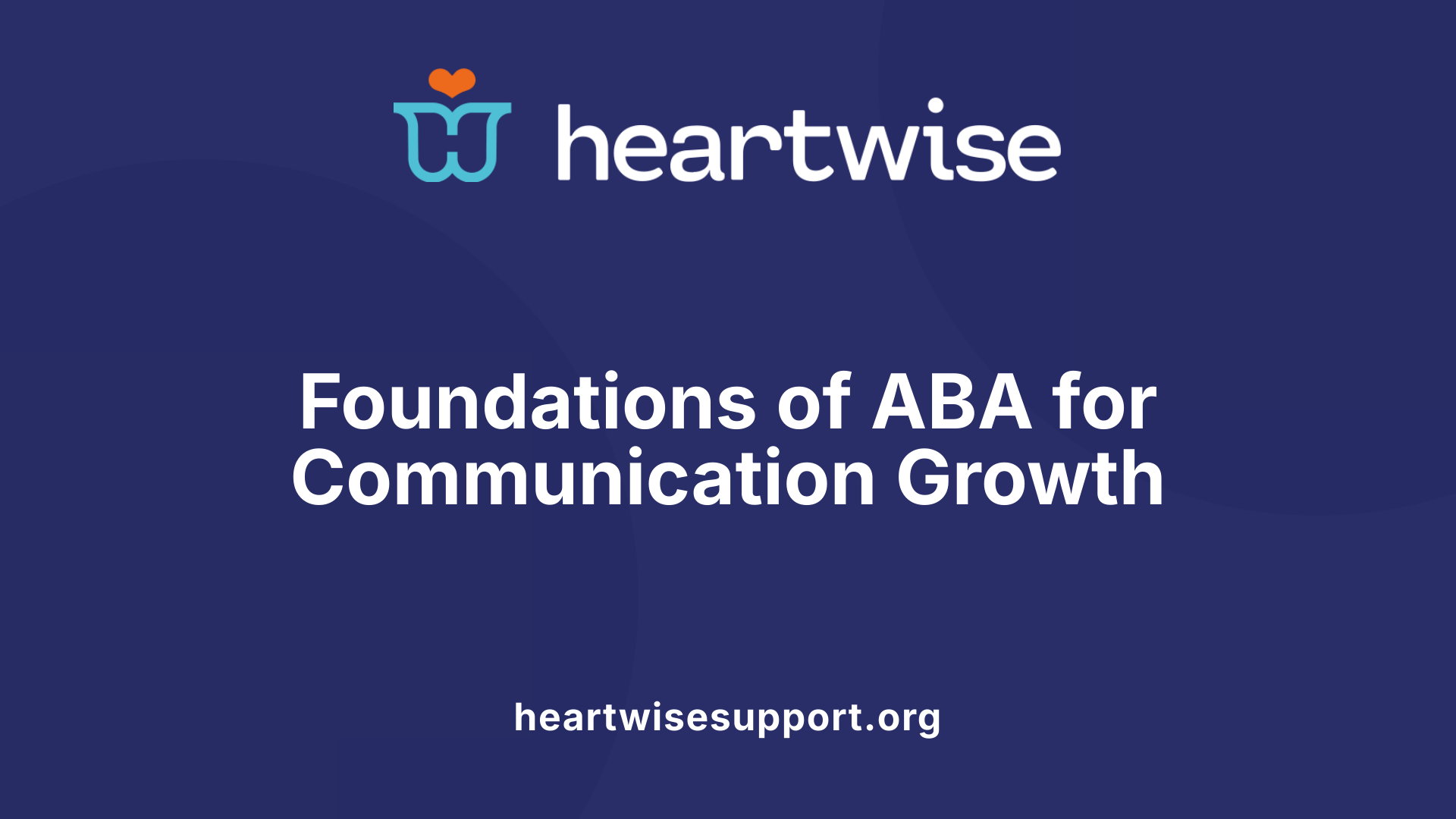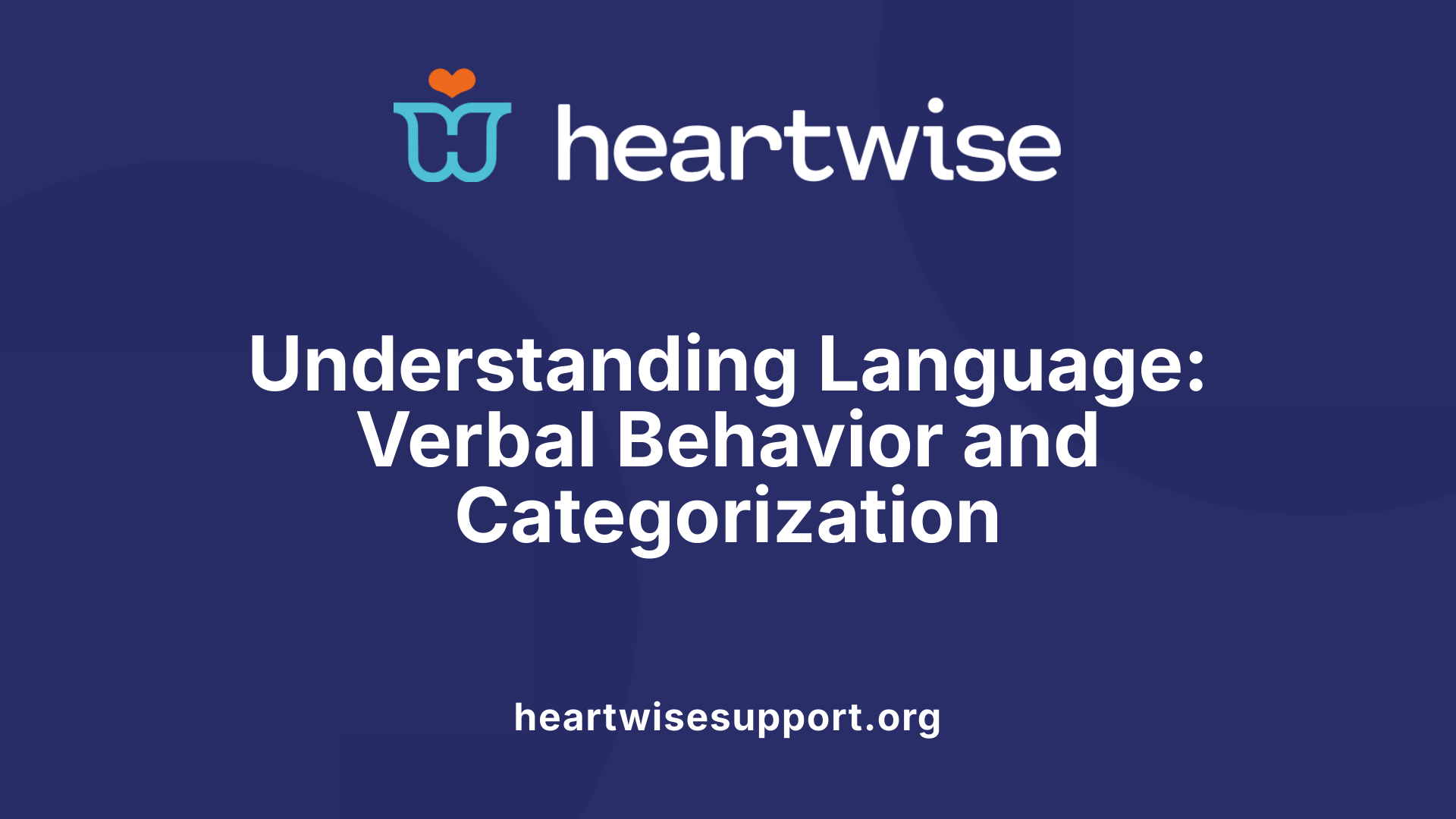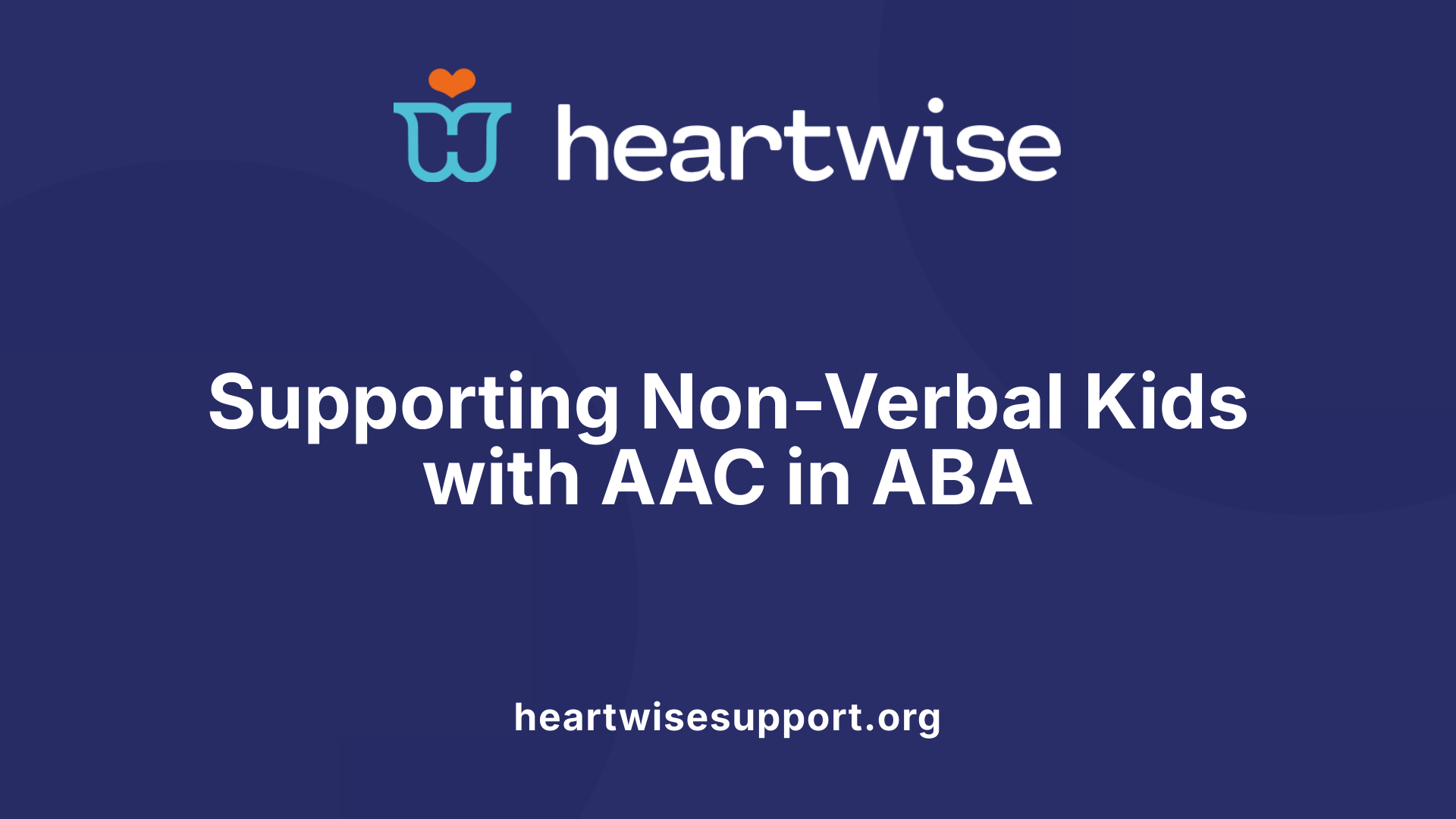Unlocking Effective Communication with ABA
Applied Behavior Analysis (ABA) is a cornerstone of intervention for children with autism, significantly advancing their communication skills. Rooted in scientific research, ABA employs a variety of techniques and tools tailored to each child's unique needs to foster meaningful interactions and language development. This article explores how ABA supports communication development, the strategies used, integration with augmentative and alternative communication (AAC), and practical resources for parents and caregivers.
Foundations of ABA in Communication Development

How does ABA therapy support communication development in children with autism spectrum disorder?
ABA therapy plays a vital role in helping children with autism improve their communication skills. It does so by teaching and reinforcing specific language behaviors such as requesting, labeling objects, commenting, and engaging in conversations.
Therapists use techniques like mand training, which focuses on teaching children to make requests for needs or desires. Echoic training helps children repeat sounds or words, improving pronunciation and speech clarity. Intraverbal training teaches children to respond appropriately to questions or comments from others.
A variety of strategies are employed to promote meaningful interactions. These include prompting communication attempts, creating situations that encourage speech, and reinforcing successful communication. ABA therapists often develop individualized plans tailored to each child's unique needs, focusing on expanding both expressive (speaking, signing) and receptive (understanding) language skills.
Research demonstrates that early intervention with ABA leads to notable gains in communication. Children often show increased vocal requests, better understanding of language, and improved social interactions. Combining ABA with speech therapy and maintaining consistent practice can result in significant progress, helping children develop the ability to communicate effectively, which supports their social and academic life.
Core Techniques and Strategies in ABA for Communication
What techniques and strategies are used in ABA to enhance communication skills?
ABA employs a variety of methods to develop and improve communication abilities in children with autism. One fundamental approach is modeling appropriate language behaviors. Therapists demonstrate correct speech or gestures, encouraging children to imitate these actions.
Visual supports are also widely used, especially the Picture Exchange Communication System (PECS). PECS involves using pictures or symbols to help children learn to request items or express needs, serving as a bridge to verbal communication.
Natural Environment Teaching (NET) is another effective method. It involves integrating communication opportunities into everyday routines, play, and activities so that learning occurs in real-life contexts. This keeps learning relevant and engaging.
Prompting, fading, and reinforcement are key strategies. Prompts guide the child toward successful communication, and as proficiency increases, prompts are gradually faded to promote independence. Rewarding successful communication attempts through positive reinforcement encourages children to use these skills consistently.
Repetition and responding to child-initiated communication are crucial. Repeating words and encouraging children to initiate requests helps solidify communication skills.
Early intervention, alongside collaboration with speech-language professionals, ensures strategies align with each child's unique needs. This tailored approach promotes steady progress in communication development.
In summary, ABA uses modeling, visual supports, naturalistic teaching, prompting techniques, reinforcement, and responsive interactions to foster effective communication.
The Role of Verbal Behavior and Language Categorization in ABA

How does ABA therapy support communication development in children with autism spectrum disorder?
ABA therapy plays a vital role in helping children with autism develop effective communication skills. It employs structured teaching techniques that focus on both language understanding and expression. Through direct teaching and positive reinforcement, ABA encourages children to initiate requests, label objects, and participate in social interactions.
One core approach used in ABA for language development is Verbal Behavior Therapy (VBT). VBT categorizes language into different functions or operants, such as mands (requests), tacts (labels), echoics (repetitions), intraverbals (conversational responses), and autoclitics (modifiers of other verbal behaviors). Understanding these categories allows therapists to tailor interventions targeting specific communication challenges.
The therapy involves creating situations where children can practice communication, prompting them when needed, and reinforcing successful use of language. For example, if a child requests a toy (mand), and is rewarded, they’re more likely to repeat the behavior. Similarly, labeling objects and engaging in conversational exchanges help expand their language repertoire.
Studies show that early and consistent ABA intervention enhances language outcomes significantly. Children often experience increased vocal requests, improved understanding of spoken language, and greater social engagement, especially when ABA strategies are combined with speech therapy. Ultimately, these efforts promote meaningful, functional communication abilities.
How do language categories guide intervention focus?
Categorizing language into mands, tacts, echoics, intraverbals, and autoclitics helps therapists identify specific skills to develop. For instance, if a child struggles with requesting items, the focus might be on mand training. If labeling objects is difficult, tact training becomes central.
This categorization supports a targeted approach, ensuring interventions are not generic but aligned with the child's unique needs. For example, ABA sessions can incorporate activities that maximize opportunities for children to practice each operant in natural settings.
Using this framework, therapists monitor progress within each category and adjust strategies accordingly. It also aids in setting measurable goals, such as increasing spontaneous requests (mands) or participating in conversational exchanges (intraverbals). This focused approach tends to produce faster and more meaningful improvements.
What are the implications for developing functional communication?
Focusing on language categories within ABA fosters the development of communication that is both practical and adaptable to real-life situations. When children learn to request effectively or label their environment, they are better equipped to express needs and participate socially.
Incorporating tools like Picture Exchange Communication System (PECS), speech-generating devices, or sign language further supports these categories, especially for non-verbal children. Teaching through various methods ensures broader access to communication for all learners.
By understanding the functions and types of communication, practitioners can design interventions that promote the use of language in everyday contexts. This emphasis on functional communication helps reduce frustration and problem behaviors, leading to improved social interactions, independence, and confidence.
| Language Category | Typical Focus | Tools & Techniques | Goals |
|---|---|---|---|
| Mands | Requesting | PECS, prompts | Increase requesting skills |
| Tacts | Labeling | Visual supports | Expand vocabulary |
| Echoics | Repeating | Imitation, modeling | Improve pronunciation |
| Intraverbals | Conversational responses | Turn-taking, modeling | Foster conversations |
| Autoclitics | Modifiers of behaviors | Fading prompts | Clarify and expand speech |
Understanding and applying these categories within ABA harnesses the power of behavioral science to cultivate effective communication, which is essential for the child's overall growth and development.
Effective Techniques: DTT, PRT, and Other Strategies

What are common activities used in ABA therapy to improve communication?
ABA therapy employs a variety of activities and strategies designed to enhance communication skills in children with autism. One of the foundational approaches is teaching requesting behaviors, known as mands, where children learn to ask for items or actions they need. Labeling objects and actions, called tacts, help children identify and describe their environment. Imitative language, or echoics, involves repeating words or phrases to develop speech.
To support these activities, therapists use techniques such as modeling, prompting, and natural environment teaching (NET). Modeling demonstrates desired behaviors, prompting encourages initial responses, and fading reduces prompts over time to foster independence. These methods create engaging learning opportunities that are relevant to everyday life.
For children with limited speech, augmentative and alternative communication (AAC) systems like Picture Exchange Communication System (PECS) and speech-generating devices (SGDs) are integrated into therapy. These tools allow non-verbal children to express their needs and participate more fully in social interactions.
Structured ABA strategies focus on systematic skill development. Discrete Trial Training (DTT) is a highly organized approach involving repeated, short trials to teach specific skills. Pivotal Response Treatment (PRT) emphasizes naturalistic, child-led activities that target pivotal skills, such as motivation and self-management, leading to broader improvements.
In addition to direct skill teaching, activities like role-playing, joint attention exercises, and social skills training are used to promote meaningful interactions. These approaches not only improve communication but also support social development, confidence, and independence.
Overall, the combination of these activities and techniques helps children with autism develop functional, effective communication skills that can be applied across various settings and contexts.
Supporting Non-verbal and AAC Users with ABA

How can ABA integration support the use of alternative communication methods, such as AAC?
Applied Behavior Analysis (ABA) effectively supports children with autism in developing communication skills, especially for those who are non-verbal. One essential component is the incorporation of Augmentative and Alternative Communication (AAC) tools, such as Picture Exchange Communication System (PECS), speech-generating devices (SGDs), sign language, and communication boards.
ABA helps teach the functional use of these AAC methods through structured techniques that focus on initiating and responding to communication cues. For example, prompting a child to select a picture or press a button on an SGD can be reinforced immediately to encourage consistent use.
Functional Communication Training (FCT), an ABA-specific approach, teaches children to use AAC systems to express their needs, comments, or feelings. This reduces frustrating behaviors stemming from communication difficulties and fosters positive interactions.
Reinforcement strategies are central; when a child successfully uses AAC to communicate, they receive positive feedback, such as praise or tangible rewards. This reinforcement helps the child generalize AAC use across settings and people, making communication more effective in everyday situations.
Overall, ABA provides a structured, individualized framework that enhances the utilization and acceptance of various AAC techniques. By combining behavioral principles with innovative communication tools, children with autism can learn to communicate more effectively, leading to better social engagement and independence.
This integration underscores the importance of tailored interventions, continuous assessment, and parental involvement to maximize communication outcomes for non-verbal children.
Benefits and Long-term Impact of ABA on Communication Skills

What are the benefits and effectiveness of ABA therapy in supporting communication development?
Applied Behavior Analysis (ABA) therapy is widely regarded as an evidence-based approach that effectively supports communication growth in children with autism. This therapy involves customized strategies that teach children how to express their needs and ideas more clearly, often leading to tangible improvements in their ability to communicate.
ABA techniques such as positive reinforcement, modeling, shaping, and natural environment teaching create a supportive setting for language development. Using visual aids like picture exchange communication systems (PECS) and speech-generating devices, ABA therapists help children—whether verbal or non-verbal—to develop functional communication skills. This structured approach is especially effective when introduced early, helping children build vocabulary, form sentences, and use language purposefully.
Beyond language, ABA’s focus on social skills fosters better interactions with peers and family members, which is crucial for social integration. The therapy also targets reducing problematic behaviors that interfere with communication, such as echolalia or self-stimulatory actions, allowing children to better engage with their environment.
Research consistently supports ABA’s success, showing significant gains in language, social participation, and daily living skills. Many children experience not only improvements in their communication but also a reduction in autism severity over time. These positive outcomes contribute to increased independence and improved quality of life.
In summary, ABA provides a comprehensive, scientifically backed framework that enhances communication abilities, supports social development, and promotes overall well-being for children with autism.
| Communication Aspect | Improvement Area | Tools and Strategies | Estimated Outcomes |
|---|---|---|---|
| Vocal Requests | Requesting needs | PECS, vocal prompting, reinforcement | Increased requesting; clearer speech |
| Social Interactions | Peer engagement | Joint attention training, modeling | Improved social skills and peer acceptance |
| Problematic Behaviors | Reduction of hindrances | FCT, extinction, behavior management | Fewer behaviors that block communication |
| Overall Communication | Language expansion | Natural environment teaching, shaping | Better vocabulary, sentence formation |
| Independence | Daily activities | Skills training, chaining | Greater self-sufficiency |
This ongoing progress is supported by diligent data collection and progress monitoring, ensuring the therapy adapts to each child's evolving needs. Parental involvement, such as modeling language and creating communication opportunities at home, further enhances outcomes.
Overall, ABA therapy’s targeted, individualized methods have demonstrated substantial and lasting benefits, empowering children with autism to communicate effectively and participate more fully in their communities.
Parental and Caregiver Involvement in Enhancing Communication
How can parents and caregivers support communication development in children with autism?
Active participation from parents and caregivers plays a vital role in reinforcing communication skills learned through ABA therapy. One of the most fundamental approaches is modeling language and encouraging interaction at home. By consistently talking to the child, using simple language, and demonstrating effective communication behaviors, caregivers help children understand how to express themselves.
Creating visual supports and establishing routines further facilitate learning. Visual aids such as picture schedules, communication boards, or PECS cards assist children in understanding daily activities and expressing their needs. Routine consistency helps children predict and learn new skills within familiar contexts.
Promptly responding to communication attempts encourages children to keep practicing. Whether a child gestures, uses a picture, or attempts to vocalize, immediate positive responses reinforce the behavior. These responses should be encouraging and may include praise, additional prompts, or providing the requested item.
Incorporating ABA strategies into daily routines makes learning seamless and natural. For instance, during mealtimes, playtime, or shopping, caregivers can implement techniques like natural environment teaching (NET), which involves using real-world opportunities to promote communication. Prompting, reinforcing, and gradually fading support help children gain independence in their communication.
Supporting the generalization and maintenance of skills is also crucial. This involves practicing skills across varied settings, with different people, and over time to ensure lasting progress. Consistent reinforcement across environments ensures that children can effectively use their communication skills in everyday situations.
What resources are available for parents and caregivers to support ABA-supported communication strategies?
Parents and caregivers are encouraged to actively support communication development through creating opportunities, visual supports, joint attention activities, modeling, and positive reinforcement. They can learn to incorporate ABA strategies into daily routines, such as using visual aids, encouraging child-initiated communication, and responding promptly to attempts.
Many educational resources, workshops, and professional guidance are available to help families implement evidence-based strategies effectively. These resources provide practical tips, step-by-step instructions, and ongoing support tailored to individual children’s needs.
Parental involvement is essential for generalizing skills learned in therapy to natural settings, ensuring continuity and sustained progress in communication development. With proper training and consistent effort, families can significantly enhance their child's communication abilities while strengthening their bond.
The Future of ABA in Communication Support and Implementation

Research directions and emerging tools
The field of Applied Behavior Analysis (ABA) is continuously evolving, with new research exploring innovative ways to support communication development in children with autism. Emerging tools such as advanced Augmentative and Alternative Communication (AAC) devices, including speech-generating devices and sophisticated communication boards, are gaining traction. Studies are focusing on how these tools can be seamlessly integrated into daily routines to maximize their effectiveness. New methodologies like virtual reality and mobile applications are also being tested to create immersive learning environments that encourage functional communication skills.
Training and certification of practitioners
As ABA expands, the importance of well-trained practitioners becomes increasingly evident. Certification bodies, like the Behavior Analyst Certification Board (BACB), update training standards regularly to include the latest evidence-based practices. Future trends suggest more comprehensive, accessible training programs incorporating online modules, simulations, and ongoing professional development, ensuring that behavior analysts stay current with technological advancements and new research insights.
Integrating technology and data collection methods
Technology plays a vital role in refining ABA therapy. Digital tools such as data collection apps allow therapists and parents to monitor progress more precisely and in real-time. Wearable sensors and AI-based analysis can help identify subtle behavioral patterns, enabling more personalized intervention plans. Natural Environment Teaching (NET) and other naturalistic strategies are being enhanced with technology, making it easier to encourage spontaneous use of communication skills in everyday settings.
Enhancing collaboration among professionals and families
Effective communication development requires a team effort. Future strategies focus on improving collaboration among behavior analysts, speech-language pathologists, educators, and families. Digital platforms facilitate sharing progress data, schedules, and custom strategies, fostering consistency across settings. Training parents and caregivers to implement ABA strategies at home through virtual coaching and interactive modules is also advancing, promoting a cohesive approach to support children’s communication skills.
| Focus Area | Current Trend | Emerging Developments | Impact on Communication Support |
|---|---|---|---|
| Technology Integration | Data collection apps | AI analysis, wearable sensors | Personalized, precise interventions |
| Practitioner Training | Online modules | Virtual simulations, ongoing education | Well-prepared professionals |
| Collaboration | Digital sharing platforms | Virtual coaching | Consistent strategies at home and school |
| Tools and Devices | AAC devices | Enhanced, intuitive tools | Broader accessibility |
Transforming Communication with Science and Care
ABA therapy provides a robust, scientifically-supported framework for developing communication skills in children with autism. Through targeted strategies, individualized plans, and active involvement of families and professionals, ABA opens pathways to meaningful social interaction, independence, and improved quality of life. Continued research and technological integration promise to further refine and expand its effectiveness, making a lasting impact on the lives of children and their families.
References
- How ABA Therapy Can Improve Communication Skills in Children
- 4 Methods for Increasing Communication Within Applied Behavior ...
- Applied Behavior Analysis (ABA) | Autism Speaks
- How ABA Therapy Supports Language Development
- Applied Behavior Analysis and Communication Services - ASHA
- Does ABA Therapy Help With Speech? Yes. Here's Why
- ABA Therapy vs Speech Therapy for ASD: Which is Better for My ...
- Resources - Blue ABA
- ABA Therapy











